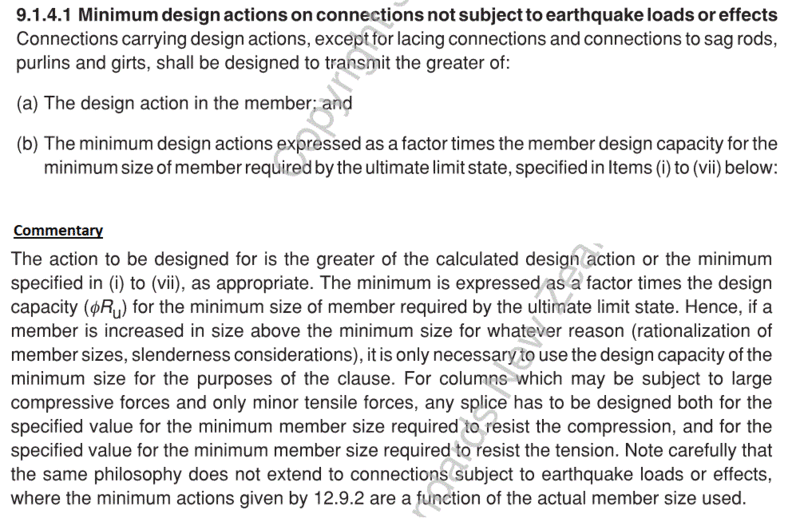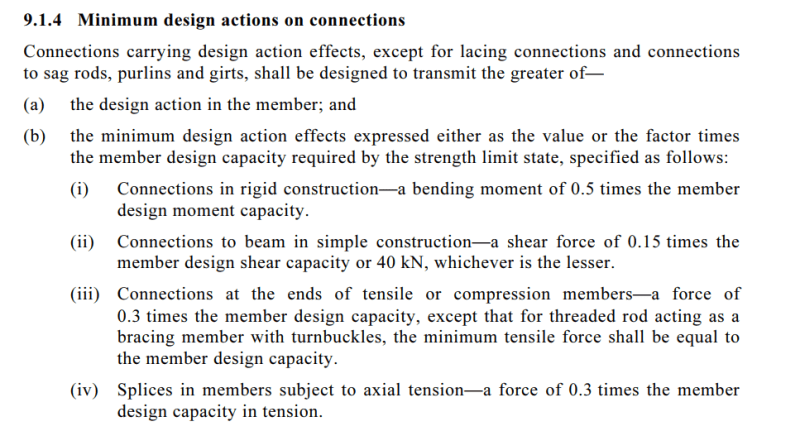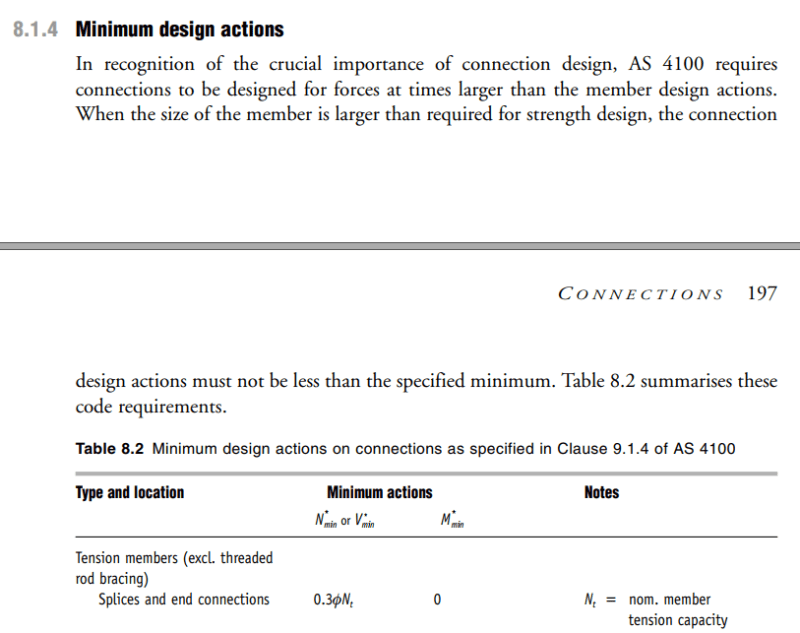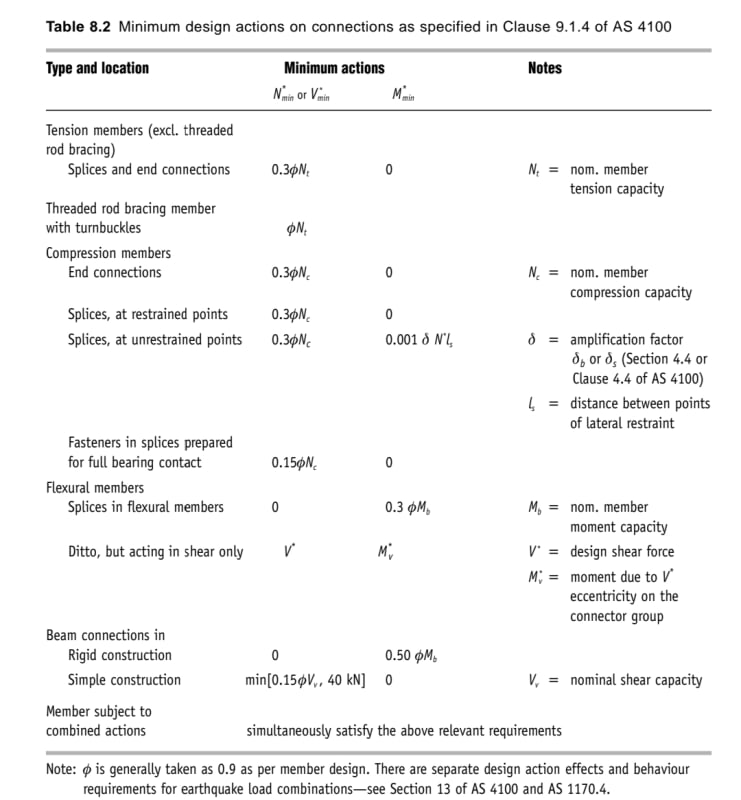For seismic 9.1.4.1 does not applying for NZS3404 design, the heading of the clause even states this:-
Instead you need to be focused on chapter 12. CL12.9.2 is the one you need to look at, this clause states either design for the upper limits implied in CL12.9.1.2.2(4) or as per 12.9.2.1.1 which states CL12.9.2 is the one you need to look at, this states either
design for the lesser of the upper limits implied in 12.9.1.2.2(4) or as per 12.9.2.1.1 which states 50% of the member provided (not the minimum member size like in chapter 9) provided (
not the minimum member size like in chapter 9). CL12.9.2.1.2 states as well that you only need to design the connection for actions that are relevant, for example no tension, then no need to design connection for the tension minimum design actions.
The
lesser bit above is key..... if you provide more info according to the questions below I can provide more guidance.
1. What EQ load have you used to come up with the 20kN load in tension? mu=1.0 Sp=1.0?
2. What category system/case number are you dealing with from table 12.2.6?
3. What category member are you dealing with for the columns (1/2/3/4?)?
4. Does this require you to have you done a capacity design, or have you been limited by any of the upper limit design actions in CL12.9.1.2.2(4)?
These connection requirements are about imparting some minimum level of robustness. But I feel your pain when you're dealing with very small loads, but the key is in the lesser requirement noted. This will mean by analysing with the right ductility and Sp factor that you can use the value straight out of the analysis
The reality is earthquakes do not follow the code, your seismic load could be two times higher than the code states, so if you just provide a design that accounts for the 20kN and no more you're potentially not really meeting the code requirements. If you're reliant on brittle modes of failure (like reliance on concrete failure mechanisms for anchors) then you wouldn't meet the general requirements of chapter 12 that requires suppression of brittle modes of failure.
[EDIT] PS - The Australians contributing are correct for any loading
not including earthquake, but their advice is not strictly correct when dealing with seismic to NZS3404.





![[ponder] [ponder] [ponder]](/data/assets/smilies/ponder.gif) ....
.... ![[banghead] [banghead] [banghead]](/data/assets/smilies/banghead.gif)




